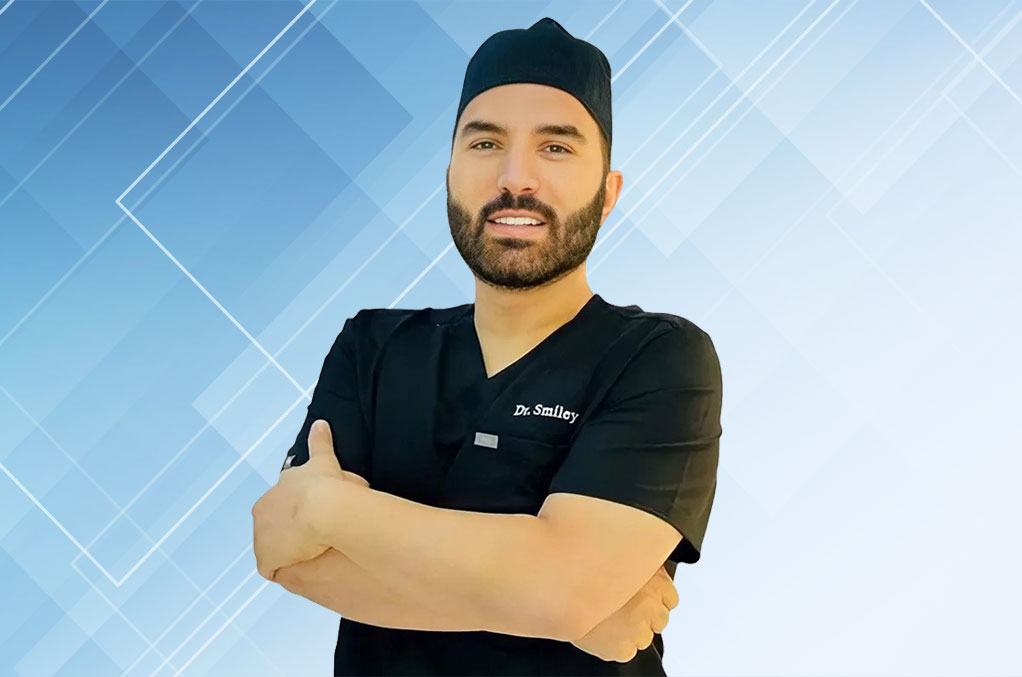Breast reduction surgery, also known as reduction mammoplasty, is a popular procedure that can significantly improve the quality of life for women with overly large breasts. Although many people have found this operation to be helpful in reducing their physical discomfort and increasing their confidence, like any surgical procedure, there are possible dangers and drawbacks. Fat necrosis is one such condition that needs to be addressed. We’ll go deeply into the subject of fat necrosis following breast reduction in this thorough guide, including its causes, symptoms, diagnosis, available treatments, and preventative measures.
Understanding Breast Reduction Surgery
Before getting into the nuances of fat necrosis, it is necessary to know the process of breast reduction surgery. In order to obtain a smaller, more proportionate breast size, breast reduction surgery entails removing extra breast tissue, fat, and skin. Incisions are usually made, the areola and nipple are repositioned, and the remaining breast tissue is reshaped during the procedure.
The primary goals of breast reduction surgery include:
- Reducing physical discomfort associated with large breasts
- Improving posture and alleviating back, neck, and shoulder pain
- Enhancing body proportions and self-image
- Facilitating participation in physical activities
While breast reduction surgery is generally safe and effective, it’s crucial to be aware of potential complications, including fat necrosis.
Can Fat Necrosis Occur After Breast Reduction?
Yes, fat necrosis after breast reduction is a recognized complication of the procedure. Although not extremely common, it’s important for patients to understand that fat necrosis after breast reduction can occur. The incidence of fat necrosis after breast reduction varies, with studies reporting rates ranging from 2% to 20% of cases, depending on the specific surgical technique used and other factors.
What is Fat Necrosis?
Fat necrosis after breast reduction is a benign (non-cancerous) condition that occurs when fatty tissue in the breast dies due to a lack of blood supply. When fat cells die, they release their contents, which can trigger an inflammatory response in the surrounding tissue. This process can lead to the formation of firm lumps or areas of hardened tissue within the breast.
It’s crucial to understand that while fat necrosis after breast reduction can be concerning, it is not a precursor to breast cancer. However, because it can sometimes mimic the appearance of breast cancer on imaging studies, proper evaluation and diagnosis are essential.
Causes of Breast Fat Necrosis
Several factors can contribute to the development of fat necrosis after breast reduction:
- Surgical Trauma: During breast reduction surgery, the manipulation and cutting of breast tissue can damage blood vessels that supply oxygen and nutrients to fat cells. This disruption in blood supply can lead to fat necrosis.
- Compromised Blood Supply: The breast reduction technique used may sometimes inadvertently compromise the blood supply to certain areas of the breast, particularly in cases where large amounts of tissue are removed.
- Hematoma Formation: A hematoma is a collection of blood outside blood vessels. If a hematoma forms after surgery, it can put pressure on surrounding tissues, potentially leading to fat necrosis.
- Infection: Although rare, post-surgical infections can sometimes contribute to the development of fat necrosis by damaging tissue and compromising blood flow.
- Radiation Therapy: In cases where a patient undergoes radiation treatment after breast reduction (which is uncommon but possible in cases of breast cancer), the radiation can increase the risk of fat necrosis.
- Smoking: Patients who smoke have a higher risk of developing fat necrosis after breast reduction due to the negative effects of smoking on blood circulation and tissue healing.
- Obesity: Excess body weight can put additional stress on healing tissues and may increase the risk of fat necrosis.
- Large Volume Reduction: Patients requiring very large reductions may be at a higher risk of fat necrosis due to the extensive tissue manipulation required.
Signs and Symptoms of Breast Fat Necrosis
Recognizing the signs of fat necrosis after breast reduction is crucial for early detection and management. The symptoms can vary from person to person and may develop weeks to months after the surgery. Common signs and symptoms include:
- Lumps or Hard Areas: The most common sign of fat necrosis after breast reduction is the presence of firm, round lumps in the breast tissue. These lumps can range in size from very small to several centimeters in diameter.
- Pain or Tenderness: Some women experience discomfort or tenderness in the affected area. The level of pain can vary from mild to severe and may be constant or intermittent.
- Skin Changes: The skin over the area of fat necrosis may appear red, bruised, or dimpled. In some cases, there may be visible changes in the breast contour.
- Nipple Retraction: In rare cases, fat necrosis can cause the nipple to appear pulled inward or distorted.
- Oil Cysts: As fat cells break down, they may form oily fluid-filled cysts. These cysts can sometimes be felt as soft, round lumps beneath the skin.
- Skin Discoloration: The affected area may appear bruised or have a different color compared to the surrounding skin.
- Changes in Breast Shape: Severe cases of fat necrosis can lead to noticeable changes in the overall shape or contour of the breast.
- Calcifications: Over time, areas of fat necrosis may calcify, appearing as white spots on mammograms.
It’s important to note that these symptoms can sometimes mimic those of breast cancer, which is why proper medical evaluation is essential. Any new or persistent changes in your breasts following breast reduction surgery should be promptly reported to your healthcare provider.
Also Read:
Understanding the Recovery Time for Breast Reduction Surgery: What to Expect
Can You Breastfeed after a Breast Reduction? A Guide for Mothers
Breast Reduction for Dense Breasts: All You Need To Know
Diagnosis of Fat Necrosis After Breast Reduction
If you suspect fat necrosis after breast reduction or notice any unusual changes in your breasts, it’s crucial to seek medical attention. Your healthcare provider will likely perform a series of evaluations to confirm the diagnosis and rule out other potential issues:
- Physical Examination: Your doctor will carefully examine your breasts, feeling for lumps, areas of hardness, or other irregularities. They will also assess the overall shape and symmetry of your breasts.
- Medical History Review: Your healthcare provider will ask about your breast reduction surgery, recovery process, and any symptoms you’ve experienced.
- Imaging Tests: Various imaging techniques may be used to visualize the affected area: a. Mammogram: This X-ray of the breast can help identify areas of fat necrosis, which often appear as round or irregular masses with or without calcifications. b. Ultrasound: This non-invasive imaging technique can help distinguish between solid masses and fluid-filled cysts, which is useful in diagnosing fat necrosis. c. MRI (Magnetic Resonance Imaging): In some cases, an MRI may be recommended to get a more detailed view of the breast tissue and any suspicious areas.
- Biopsy: If there’s any uncertainty about the diagnosis, your doctor may recommend a biopsy. This involves taking a small sample of tissue from the affected area for microscopic examination. A biopsy can definitively confirm the presence of fat necrosis and rule out cancer or other conditions.
Treatment for Breast Fat Necrosis
The treatment approach for fat necrosis after breast reduction depends on various factors, including the severity of symptoms, the size and location of the affected area, and the impact on breast appearance. In many cases, fat necrosis resolves on its own without specific treatment. However, when intervention is necessary, several options are available:
- Observation: For small, asymptomatic cases of fat necrosis, your doctor may recommend simply monitoring the condition over time. Many cases of fat necrosis will gradually resolve on their own as the body absorbs the dead fat cells.
- Pain Management: If fat necrosis is causing discomfort, over-the-counter pain relievers such as ibuprofen or acetaminophen can help manage pain and reduce inflammation.
- Warm Compresses: Applying warm compresses to the affected area can help improve circulation and may speed up the resolution of fat necrosis.
- Aspiration: If an oil cyst has formed as a result of fat necrosis, your doctor may use a fine needle to drain the fluid. This procedure, known as fine-needle aspiration, can provide relief and improve the appearance of the breast.
- Steroid Injections: In some cases, corticosteroid injections into the affected area may be recommended to reduce inflammation and promote healing.
- Surgery: For severe cases of fat necrosis or when the condition is causing significant cosmetic issues, surgical removal of the affected tissue may be necessary. This is typically done through a small incision and can often be performed under local anesthesia.
- Fat Grafting: To address any contour irregularities caused by fat necrosis, fat grafting techniques can be used. This involves taking fat from another part of the body and carefully injecting it into the breast to restore a smooth shape.
- Liposuction: In some cases, liposuction techniques may be used to remove areas of fat necrosis and improve breast contour.
- Breast Reconstruction: In rare, severe cases where fat necrosis has significantly affected breast appearance, more extensive reconstructive surgery may be considered.
It’s important to work closely with your plastic surgeon to determine the most appropriate treatment plan for your specific situation. The goal of treatment is not only to address the fat necrosis but also to maintain or restore the aesthetic results of your breast reduction surgery.
Preventing Fat Necrosis After Breast Reduction
While it’s not always possible to completely prevent fat necrosis after breast reduction, there are several steps that can help reduce the risk:
- Choose an Experienced Surgeon: Select a board-certified plastic surgeon, like Dr. Smiley. one of the best plastic surgeons in Beverly Hills. He has extensive experience in breast reduction surgery. An experienced surgeon like him will use techniques that minimize tissue trauma and preserve blood supply to the breast tissue.
- Follow Post-operative Instructions: Carefully adhere to your surgeon’s post-operative care instructions. This includes wearing supportive garments, avoiding strenuous activities, and attending all follow-up appointments.
- Quit Smoking: If you smoke, it’s crucial to quit several weeks before surgery and throughout the recovery period. Smoking impairs blood flow and can significantly increase the risk of complications, including fat necrosis.
- Maintain a Healthy Lifestyle: Eating a balanced diet rich in nutrients and staying hydrated can promote overall healing. Regular exercise (once approved by your surgeon) can also improve circulation.
- Manage Chronic Health Conditions: If you have conditions like diabetes that can affect healing, work with your healthcare team to ensure they are well-controlled before and after surgery.
- Avoid Trauma to the Breasts: During the healing process, be cautious to avoid any trauma or excessive pressure on your breasts.
- Communicate with Your Surgeon: Report any concerns or unusual symptoms to your surgeon promptly. Early intervention can sometimes prevent minor issues from becoming more significant problems.
Long-term Outlook and Follow-up Care
For most women, fat necrosis after breast reduction is a temporary condition that resolves with time or minimal intervention. However, it’s crucial to maintain regular breast health check-ups and report any new or persistent symptoms to your healthcare provider.
Follow-up care after breast reduction surgery typically involves:
- Regular Check-ups: Your plastic surgeon will schedule follow-up appointments to monitor your healing progress and address any concerns.
- Breast Self-exams: Once your surgeon gives you the go-ahead, perform regular breast self-exams to familiarize yourself with your new breast shape and texture. This will help you notice any changes promptly.
- Mammograms: Follow your doctor’s recommendations for mammograms. If you’ve had fat necrosis, inform the radiologist about your breast reduction surgery and any complications you’ve experienced.
- Ongoing Communication: Keep an open line of communication with your healthcare team. Don’t hesitate to reach out if you have questions or concerns about your breasts.

Have additional questions?
We’re here to help. Let’s talk.
Conclusion
Fat necrosis after breast reduction, while potentially concerning, is generally a benign condition with good treatment options available. By understanding the signs, causes, and management strategies for breast fat necrosis, patients can work closely with their healthcare providers to navigate this potential complication effectively.
If you’re considering breast reduction surgery or have recently undergone the procedure, don’t let the fear of complications like fat necrosis deter you from seeking the care you need. Instead, use this knowledge to have informed discussions with your healthcare team and make decisions that are right for your individual situation.
Ultimately, maintaining open communication with your plastic surgeon, following post-operative instructions diligently, and promptly reporting any unusual changes in your breasts are key to ensuring the best possible outcome from your breast reduction surgery.




